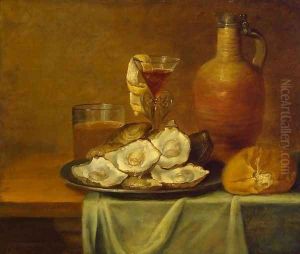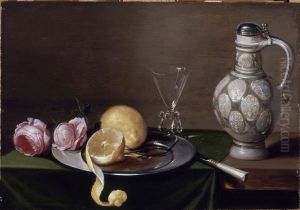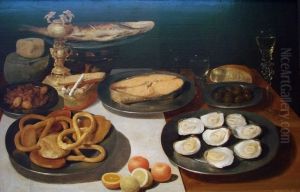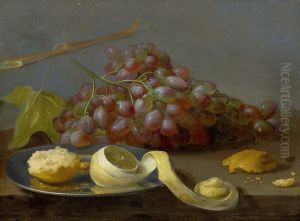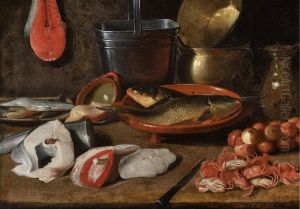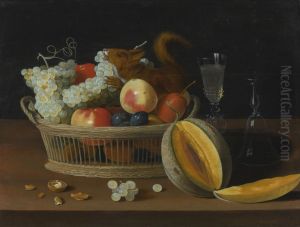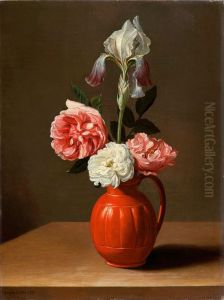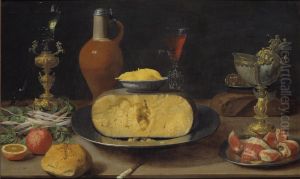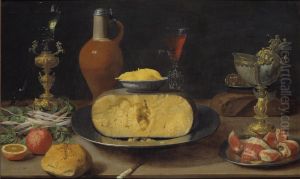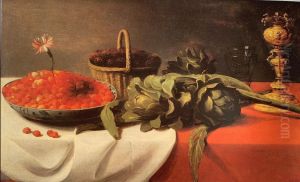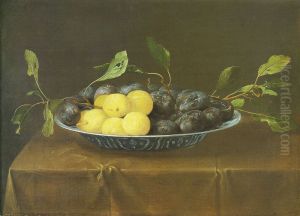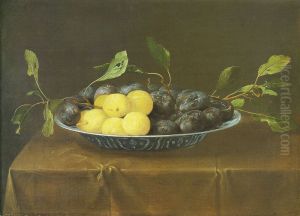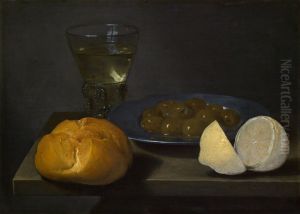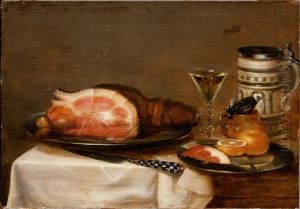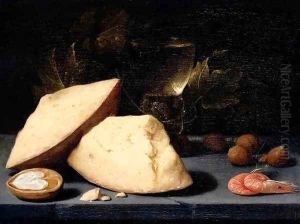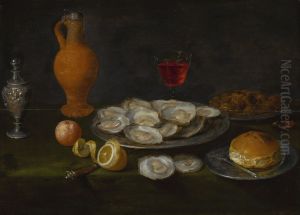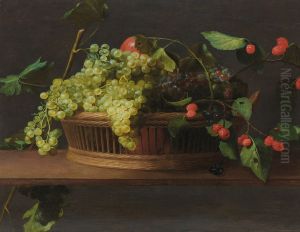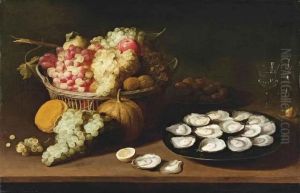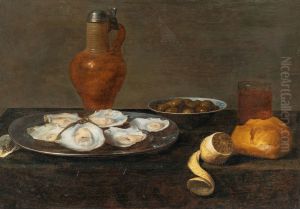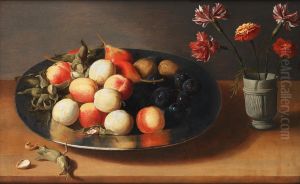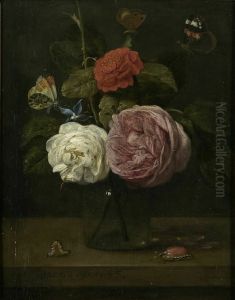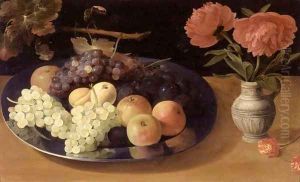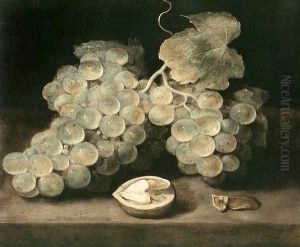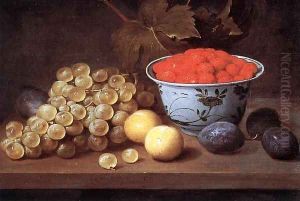Jacob van Es Paintings
Jacob van Es was a notable Flemish Baroque painter, born in 1596 in Antwerp, a city then bustling with artistic fervor and a key center of the Northern Renaissance. His death is recorded in 1666, also in Antwerp, where he spent the majority of his life and career. Van Es was renowned for his still life paintings, a genre that was gaining significant popularity in Europe during his lifetime. His work is characterized by meticulous attention to detail, vibrant coloration, and the often symbolic representation of objects, which was typical of the era's still life genre.
Van Es's contribution to the development of the still life genre in Flemish art cannot be overstated. He was part of a wave of artists who elevated still life from mere decorative works to subjects worthy of artistic exploration, imbuing them with layers of meaning and aesthetic value. His paintings often featured arrangements of food, flowers, and inanimate objects, rendered with such precision and realism that they almost invite the viewer to reach out and touch them.
Despite the high quality of his work, Jacob van Es did not gain the same level of fame as some of his contemporaries, such as Peter Paul Rubens or Anthony van Dyck. However, his paintings were highly valued among collectors and connoisseurs during his lifetime, and they continue to be appreciated by art historians and collectors today for their beauty and historical significance.
Van Es's career was largely centered in Antwerp, where he was a member of the Guild of Saint Luke, an association of painters, engravers, and other artists. His membership in the guild underscores his recognition and status within the local art community. Through his detailed and carefully composed still lifes, van Es contributed to the flourishing of Flemish art in the 17th century, leaving behind a legacy that continues to inspire admiration and study among art enthusiasts and professionals.
